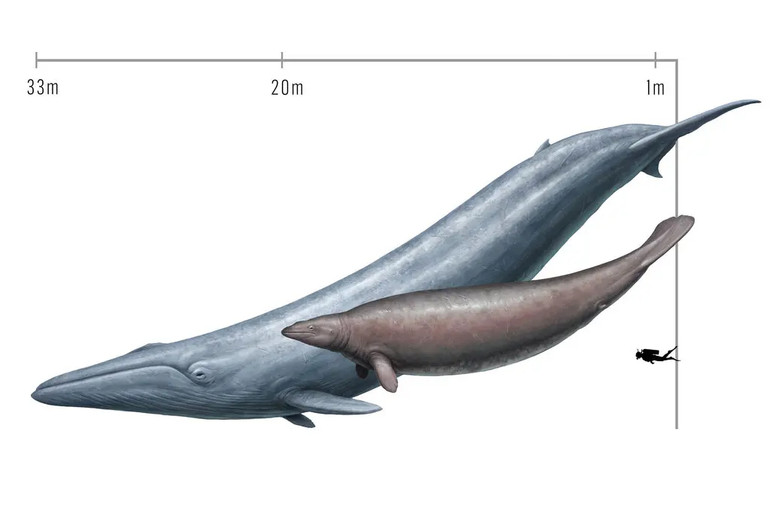The ancient whale Perucetus was not the heaviest animal in history – scientists
[ad_1]
Mario Urbina, paleontologist from the Natural History Museum of the National University of San Marcos in Lima (Peru)
Photo: Marco Garro
Scientists questioned the assertion of colleagues that the whale of the ancient Perucetus species, whose fossilized bones discovered paleontologists, was the heaviest animal that ever lived, and could weigh more than 200 tons.
“These numbers don’t make any sense”says Nicholas Pinson, a paleontologist at the Smithsonian National Museum of Natural History and one of the authors of the new study.
In the new research it is said to have been large, but not as large as modern blue whales, writes New York Times. The team of scientists concluded that Perucetus probably weighed between 60 and 70 tons and was about the size of a sperm whale.
They also analyzed blue whale fossils and provided a new estimate of the species’ weight. It can reach up to 270 tons – this makes them the heaviest known species in the history of the animal world.

Comparison of Perucetus colossus (right) with a blue whale
Photo: Cullen Townsend
Perucetus first became known in 2010, when Mario Urbina, a paleontologist from the Museum of Natural History at the National University of San Marcos in Peru, noticed the animal’s bones in the desert.
He and his colleagues unearthed 13 vertebrae, four ribs and part of a pelvis. The bones had many signs of belonging to cetacean species. They were surprisingly large and heavy.
Dr. Urbina and his colleagues reconstructed the complete skeleton of Perucetus by studying much smaller whales that lived at the same time. They also created a 3D model of a blue whale and used it to create a model of Perucetus.
Using this approach, they estimated that it weighed between 60 and 70 tonnes – much less than another research team had determined.
The author of the original study, Eli Amson of the State Museum of Natural History in Stuttgart, Germany, disagreed with the new conclusion.
“This extinct whale had a completely different biology than modern whales“, – he said.
Now he and his colleagues are creating their own three-dimensional model of the ancient species. They discovered that Perucetus was even more manatee-like than they first thought. This supports their conclusion that it rivaled or surpassed the blue whale in weight.
Dr. Pinson said Perucetus remains a major discovery because paleontologists had long believed that whales had evolved to enormous sizes only in the last few million years. Even at 60 tons, Perucetus would have been a giant among early whales.
We will remind, inthe Chinese found out how whales “sing”.
[ad_2]
Original Source Link











